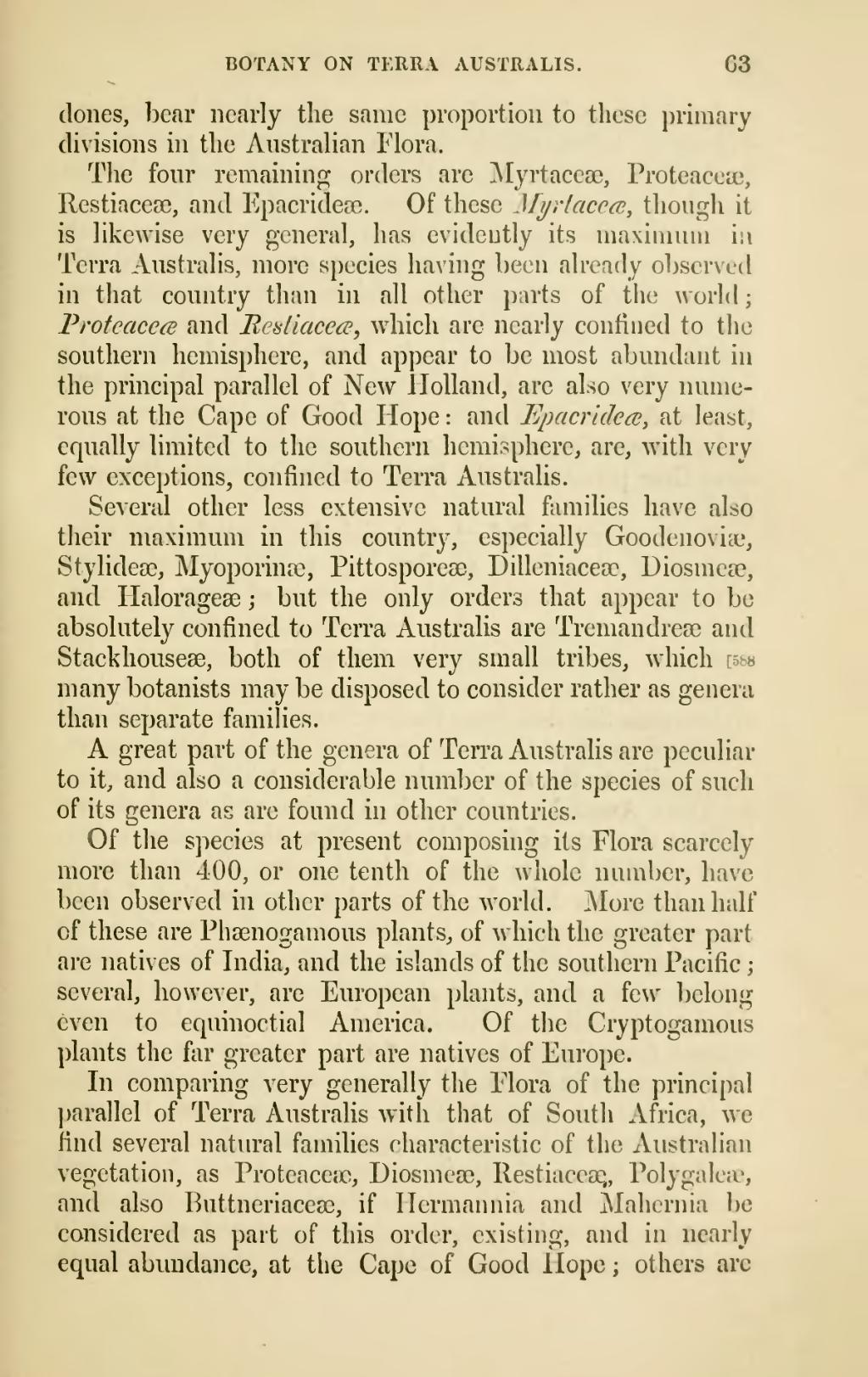dones, bear nearly the same proportion to these primary divisions in the Australian Flora.
The four remaining orders are Myrtaceæ, Proteaceæ, Restiaceæ, and Epacrideæ. Of these Myrtaceæ, though it is likewise very general, has evidently its maximum in Terra Australis, more species having been already observed in that country than in all other parts of the world; Proteaceæ and Restiaceæ, which are nearly confined to the southern hemisphere, and appear to be most abundant in the principal parallel of New Holland, are also very numerous at the Cape of Good Hope: and Epacrideæ, at least, equally limited to the southern hemisphere, are, with very few exceptions, confined to Terra Australis.
Several other less extensive natural families have also their maximum in this country, especially Goodenoviæ, Stylideæ, Myoporinæ, Pittosporeæ, Dilleniaceæ, Diosmeæ, and Halorageæ; but the only orders that appear to be absolutely confined to Terra Australis are Tremandeæ and Stackhouseæ, both of them very small tribes, which [588 many botanists may be disposed to consider rather as genera than separate families.
A great part of the genera of Terra Australis are peculiar to it, and also a considerable number of the species of such of its genera as are found in other countries.
Of the species at present composing its Flora scarcely more than 400, or one tenth of the whole number, have been observed in other parts of the world. More than half of these are Phænogamous plants of which the greater part are natives of India, and the islands of the southern Pacific; several, however, are European plants, and a few belong even to equinoctial America. Of the Cryptogamous plants the far greater part are natives of Europe.
In comparing very generally the Flora of the principal parallel of Terra Australis with that of South Africa, we find several natural families characteristic of the Australian vegetation, as Proteaceæ, Diosmeæ, Restiaceæ, Polygaleæ, and also Buttneriaceæ, if Hermannia and Mahernia be considered as part of this order, existing, and in nearly equal abundance, at the Cape of Good Hope; others are
